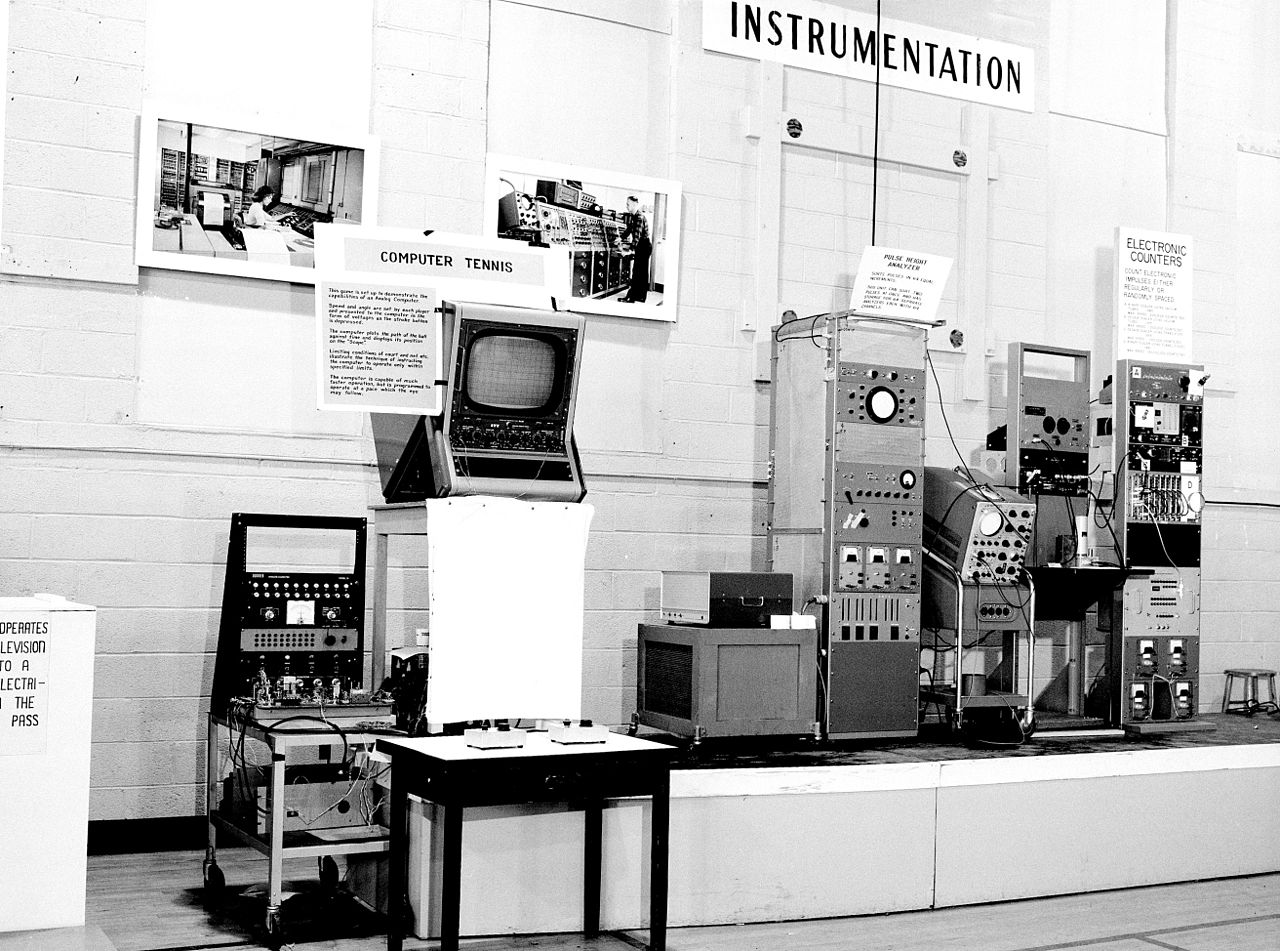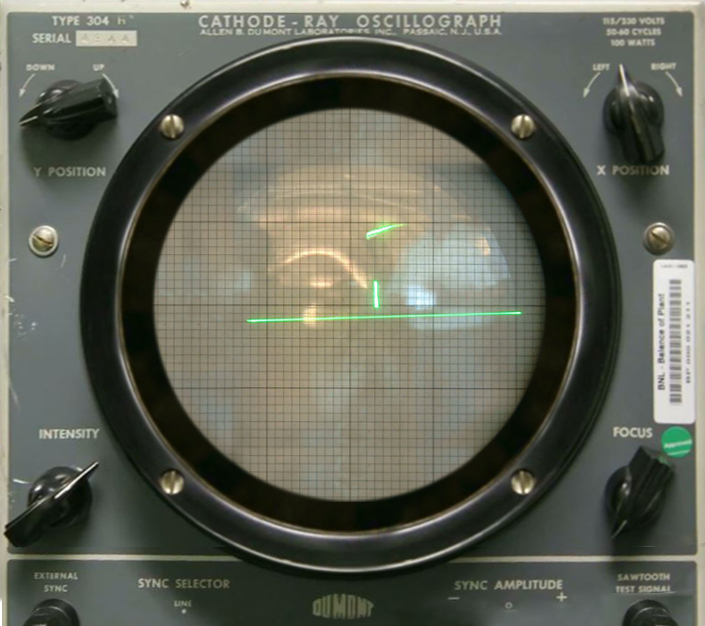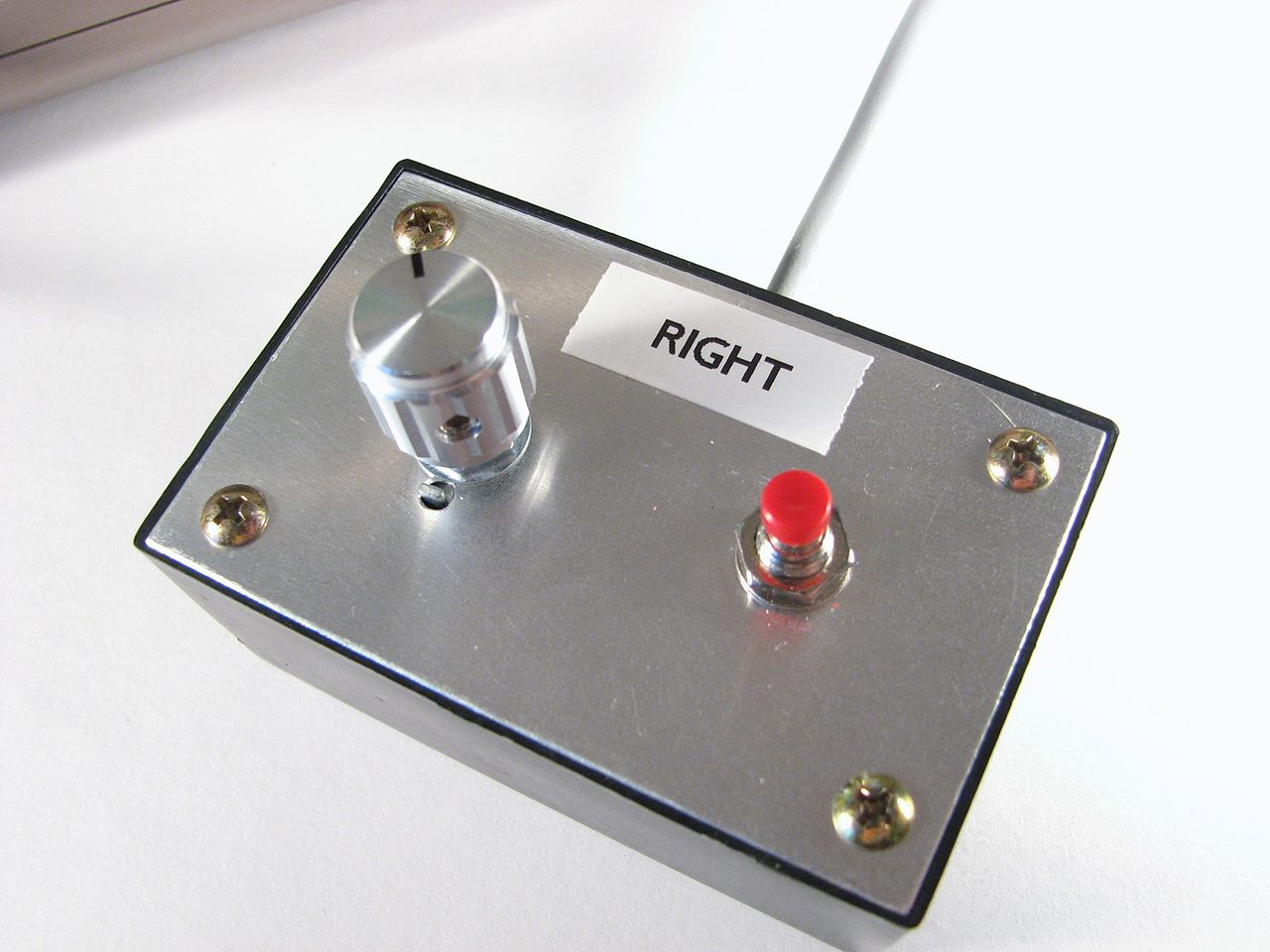In the previous feature What was the first ever video game? I took a look at the arcade cabinet-like behemoth ‘Bertie the Brain’ and the argument that this ultra-hard game of noughts and crosses was the first ever video game. The thing is with arguments; there are always two sides. And for every hard-nosed and passionate fan of Bertie the Brain as the originator of all things video game – I have it on good authority that there are at least two, possibly three, hard-nosed and passionate believers of this argument – there’s an equally ideological obsessive who would have it be known that ‘Tennis for Two’ kickstarted the age of video games.

‘Tennis for Two’ – or, as it’s sometimes known, Computer Tennis – was developed way back in 1958 by the American physicist William Higinbotham. Early in William’s career, during World War 2, he held a position at the Los Alomos National Laboratory. There William and his team developed the ignition mechanism for the first atomic bomb. It was a role that, by all accounts, Willy regretted. He was there to witness the infamous ‘Trinity Test’, the detonation of the first atomic bomb. On the 16th of July, 1945, at 5.30am, William witnessed an eye-searing blast of light resulting in an unimaginably vast ball of fire and a humungous mushroom cloud that measured some 40,000 feet across bloom into life. The steel tower that was the target of the test was wiped from the face of the Earth by the explosive equivalent of 21,000 tons of TNT. It was an event that forever changed that path of William’s life.

Soon after, convinced of the vital importance of a strong anti-nuclear proliferation movement, William co-founded the Federation of American Scientists, an organisation that had success in stemming the inexorable tide of the nuclear arms race. It was during this time that William accepted a job at the Brookhaven National Laboratory, and it was here that he created Tennis for Two.
It wasn’t exactly a pretty game, as the limited, but functional, visuals were displayed on an oscilloscope screen. The game consisted of a horizontal line to represent the court and a smaller vertical line in the centre that stood in for the net. The player would use the stick and button on an aluminium controller to dictate the angle of the ‘ball’ – aka teeny ball of light – and attempt to smack it over the net. Should the ball reach its target – it could also bounce off the net or fall out of bounds – the second player could attempt to return the ball. The game proved a massive hit at the Laboratory’s public exhibition, attracting hundreds of visitors and returning the following year with a bigger screen and the option to alter the levels of gravity.

The influence on the story of video games by Tennis for Two is clear to see. Here was a game that offered both a competitive multiplayer experience and one of the first examples of a controller to boot. It even had physics! No wonder why Tennis for Two is considered the great grand-pappy of video games – the parallels between it and 1972’s Pong are clear to see.
Playing with History is our ongoing series spotlighting video games and the real-world people and events that inspire them. From walking with dinosaurs in Jurassic World Evolution and talking real-life zombies in Days Gone, to learning about the Peaky Blinders, and chatting Ghost of Tsushima with a samurai expert, there’s plenty you may not have known about your favourite video games.
- "
- 000
- About
- Accounts
- across
- All
- American
- arguments
- atom
- attracting
- Authority
- behemoth
- bigger
- bomb
- Career
- Cloud
- Competitive
- computer
- controller
- could
- Court
- created
- developed
- During
- Early
- earth
- Event
- events
- experience
- Face
- Feature
- Feet
- Fire
- First
- game
- Games
- Ghost
- good
- gravity
- great
- here
- How
- HTTPS
- Hundreds
- i
- influence
- IT
- Job
- July
- learning
- levels
- light
- Limited
- Line
- May
- movement
- multiplayer
- National
- net
- Option
- passionate
- People
- player
- Plenty
- public
- Race
- reach
- s
- scientists
- Screen
- Series
- smaller
- steel
- Story
- success
- talking
- Target
- Team
- tennis
- test
- The
- Tide
- time
- tons
- Trinity
- Video
- video games
- walking
- war
- WHO
- world
- year











